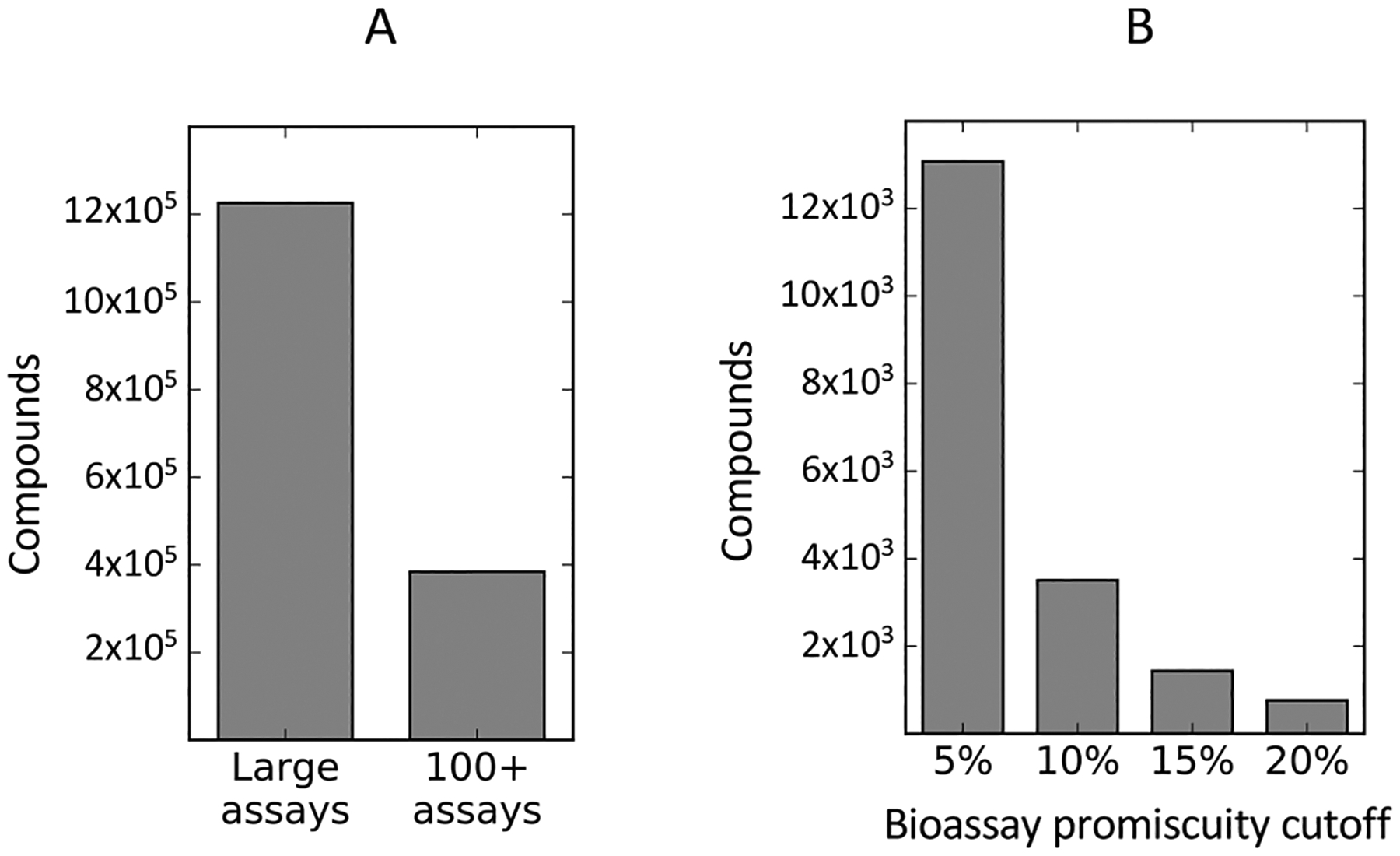Figure 1.

Assay data from PubChem reveals a large number of potential bioassay promiscuous compounds. (A) Analysis of all non-ChEMBL PubChem assays testing greater than 1000 compounds. This study restricted analysis to compounds tested in greater than 100 bioassays (384 328 compounds, from an initial 1 226 075). (B) Compounds were defined as promiscuous bioactives if they were active above a fixed percentage of tested bioassays. Cutoffs of 5, 10, 15, and 20% were initially considered. Promiscuous activity of compounds follows an approximate power distribution (Figure S1). At a promiscuity cutoff of 5%, approximately 3.40% of compounds in the data set were considered promiscuous. Note, many compounds were active in more than 20% of tested assays.
